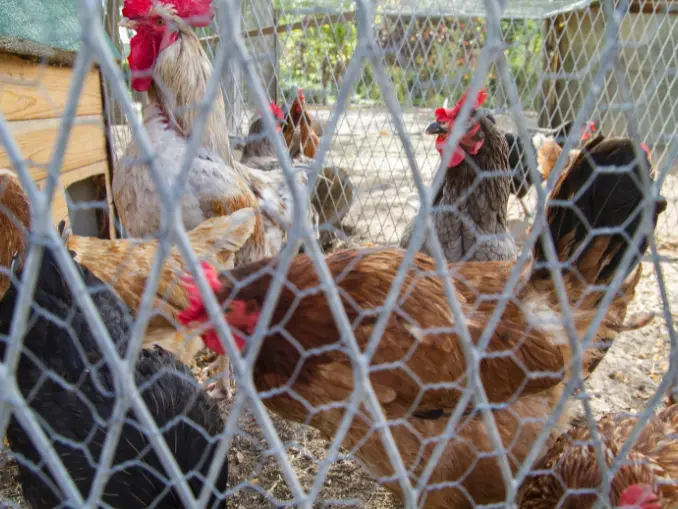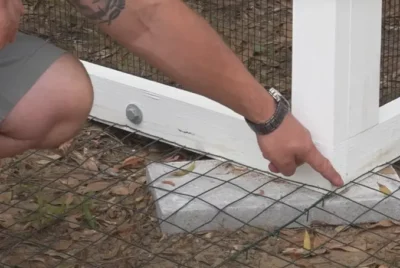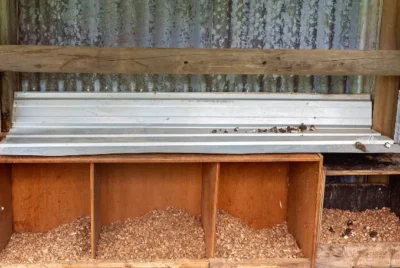A Complete Guide to Advance Chicken Coop Security Strategies
Are your precious poultry falling prey to cunning predators, leaving you helpless and frustrated? Struggling to keep your chickens safe can be a relentless battle, and basic security measures may no longer be enough. If you’ve ever lost sleep worrying about the security of your chicken coop or experienced the heartache of discovering a predator’s devastating visit, it’s time to delve deeper.
In this comprehensive guide, we’ll explore advanced chicken coop security strategies that go beyond the basics, equipping you with the knowledge and tools to safeguard your feathered flock like never before.
Factors to Consider for Ensuring Chicken Coop Security from Predators
1. Careful Choice of Materials
Opt for durable and sturdy materials that can withstand potential attacks from predators. Using treated lumber or weather-resistant woods like cedar can help prevent structural weaknesses that predators could exploit.
Additionally, avoid materials that might be easily damaged or chewed through. Ensure that the coop materials are non-toxic to both your chickens and the environment to maintain a safe and healthy living environment.
When designing a predator-resistant chicken coop, selecting materials is pivotal in ensuring durability and security. Here are some commonly used materials, along with their respective advantages and disadvantages:
Heavy-Duty Wire Mesh:
- Pros: Heavy-duty wire mesh, such as hardware cloth or welded wire, is a popular choice for coop construction. It is highly effective at keeping out predators like raccoons, weasels, and birds of prey. Its durability makes it a long-lasting option.
- Cons: Heavy-duty wire mesh provides excellent security but can be more expensive than other materials. Additionally, it may require periodic inspections for rust or damage and replacement if compromised.
Solid Wood
- Pros: Solid wood, particularly treated lumber or rot-resistant varieties like cedar, provides a sturdy and reliable framework for coop construction. It offers natural insulation and is relatively easy to work with.
- Cons: Solid wood alone may not deter predators, as they can chew through it if not reinforced with wire mesh or other protective materials. Regular maintenance is necessary to prevent rot and decay.
Reinforced Mesh
- Pros: Combining the structural strength of wooden framing with reinforced mesh, such as hardware cloth, can provide a high level of security. It offers both protection and ventilation. Reinforced mesh can cover windows, vents, and even the run area.
- Cons: Reinforced mesh may add to the overall construction cost, and it requires proper installation to ensure there are no weak points or gaps.
Plywood or Composite Materials
- Pros: Plywood and composite materials can be used for walls and roofing. They are more affordable than solid wood and can provide a smooth surface for easy cleaning.
- Cons: These materials may not be as durable as solid wood in the long run, especially outdoors. Predators can potentially break through plywood if it is not adequately reinforced.
Metal Roofing
- Pros: Metal roofing is highly durable and weather-resistant. It protects against rain, snow, and UV exposure. When installed correctly, it can also deter climbing predators.
- Cons: Metal roofing can be noisy during hailstorms or heavy rains, which may stress your chickens. It’s essential to ensure proper insulation underneath.
Read also: How to Predator-Proof Your Chicken Coop on a Budget

2. Adequate Ventilation and Lighting
Good ventilation helps control temperature and humidity, preventing moisture buildup that could attract pests or predators. Well-placed windows and vents can provide fresh air circulation while maintaining security. Adequate lighting, both natural and artificial, ensures that your chickens can see potential threats and react appropriately. Proper lighting also helps deter nocturnal predators.
3. Ensuring Structural Strength
Predators like raccoons or foxes can be persistent and strong, attempting to breach the coop’s defenses. Ensure that your coop’s structure is solid and that all components, including walls, roof, and doors, are fortified. Moreover, regularly inspect the coop for wear and tear, and reinforce any weak spots to prevent potential breaches.
4. Accessibility for Easy Cleaning and Maintenance
Design the coop to allow easy access for cleaning and maintenance tasks. This might include removable flooring, sliding trays, or hinged doors for convenient access to all coop areas. Regular cleaning helps prevent the buildup of waste, which can attract predators.
5. Thoughtful Design of Nest Boxes and Roosting Bars
Nest boxes and roosting bars are places where your birds will spend significant time. Design these areas to provide safety and comfort. Elevated roosting bars can keep your birds out of reach of ground predators, while well-designed nest boxes should be secure and cozy to encourage egg-laying. Ensure that these areas are well-ventilated and have adequate lighting.
6. Incorporating Alarm Systems and Sensors
To enhance security, consider integrating alarm systems and sensors into your coop design. These can include motion-activated lights, sound alarms, or even surveillance cameras. These devices can detect and deter predators like raccoons or foxes when they approach the coop, alerting you to potential threats so you can take appropriate action.
Read also: Step-by-Step on Setting Up Your Chicken Coop Camera
7. Consideration for Future Expansion and Adaptability
As your flock grows or your needs change, it’s important to have a coop design that allows for future expansion and adaptability. This flexibility will help you accommodate more birds or make necessary modifications to improve safety. So ensure that your coop’s layout and structure can be easily extended or modified without compromising its integrity.
Lockable Entrances and Coop Door Solutions
Lockable entrances and coop door solutions are essential for keeping your poultry safe from predators while allowing easy caretakers access. Here are various locking mechanisms and designs to consider for your chicken coop security:
1. Sliding Bolts
Sliding bolts are simple and effective. They can be installed on both sliding and hinged doors. A sliding bolt is a sturdy metal or wooden bar that slides into a bracket or slot to secure the door shut. It’s easy to use and provides a secure lock when engaged.
2. Padlocks and Hasps
Padlocks and hasps are commonly used to lock coop doors. A hasp is a metal strap with holes that fits over a staple on the door frame, and a padlock is then passed through the holes to secure the hasp in place. This combination provides a strong and customizable locking solution.
3. Keyed Locks
Keyed locks are a more advanced option for larger coop doors. They require a key to unlock, adding an extra layer of security. These locks come in various designs, including knob locks, deadbolts, and cam locks.
4. Combination Locks
Combination locks eliminate the need for keys. They operate by entering a preset numeric code to unlock the door. Combination locks are convenient and offer flexibility as you can change the code if needed.
5. Automated Door Openers
Automated door openers are a high-tech solution that allows you to schedule the closing and opening of coop doors automatically. Some models come with locking mechanisms that prevent access to the coop during the night, protecting your birds from predators.
Read also: Best Automatic Chicken Coop Doors: Upgrade Your Coop Today

6. Latch and Eye Mechanisms
Latch and eye mechanisms include a hook or latch on the door and an eye or loop on the frame. When the door is closed, the latch is engaged with the eye, and you can secure it further with a padlock for added security.
Read more: The Importance of Heavy-Duty Latches in Protecting Your Chickens From Raccoons.
7. Magnetic Locks
These locks use magnets to hold the door in place, and they can be released by sliding a metal plate or key near the magnet. These locks are secure and can easily be disengaged by caretakers with the right tool.
8. Wireless Remote Locks
Wireless remote locks are operated via remote control or a smartphone app. They offer convenience, allowing you to lock or unlock the coop door from a distance, which can be handy for caretakers who are not on-site.
Underground Barriers and Anti-Digging Measures
Predators such as foxes, raccoons, weasels, and even domestic dogs often try to dig their way into a coop to access the birds inside. To upgrade your chicken coop security, you can employ various strategies to deter these would-be intruders:

1. Hardware Cloth or Wire Mesh
One of the most common anti-digging measures is to bury hardware cloth or strong wire mesh around the perimeter of the coop. You should dig a trench around the coop, extend the wire mesh into the trench, and then cover it with soil. This creates an underground barrier that prevents predators from digging underneath the fence.
Read also: How to Attach Hardware Cloth to Chicken Coop for Ultimate Protection
2. Concrete Footers
Pouring a concrete footer along the base of your coop’s perimeter can be an effective anti-digging solution. This is especially useful for large coops or when dealing with particularly determined predators. The concrete barrier should extend several inches below the ground to deter digging.
3. Electric Fencing
Electric fencing can be installed around the coop perimeter, both above and below ground. Underground electric fencing delivers a mild shock to predators attempting to dig under or climb over the barrier, discouraging further attempts.
4. Dig-Proof Skirts
Attach a “skirt” of wire mesh or hardware cloth to the bottom of your coop or run. This extends outward from the structure, preventing digging predators from gaining access. Bury the skirt a few inches below the ground surface for added protection.
5. Predator-Resistant Berms
Build raised berms or mounds of soil around the coop’s perimeter. Predators are less likely to dig uphill, so this can be an effective natural deterrent.
Aerial Predator Protection Measures
Protecting your poultry or other small livestock from aerial predators, such as hawks, eagles, owls, and even larger birds, is essential for their safety. Here are some measures you can take to deter and protect your animals from aerial threats:

1. Covered Runs or Enclosures
The most effective way to protect your chickens from aerial predators is to keep them in covered runs or enclosures. Use sturdy wire mesh or netting that is specifically designed to withstand bird strikes. Ensure that the netting extends over the top and sides of the enclosure, creating a secure barrier.
2. Predator Deterrents
Install visual deterrents like reflective tape, shiny objects, or scarecrows in and around your poultry area. These can confuse and deter birds of prey by creating the illusion of movement and danger.
3. Roof Overhangs
Extend the roof of your coop or enclosure to create an overhang that provides additional protection. This can make it more difficult for aerial predators to access your animals.
Aviary Netting: If you have a larger area to protect, consider using aviary netting, designed to cover larger spaces while still protecting from aerial predators.
4. Anti-Perch Devices
Install anti-perch devices on fences and structures to prevent birds of prey from landing and observing your livestock. Spikes, wires, or other deterrents can be effective.
5. Sound Deterrents
Some sound devices emit sounds that are unpleasant to birds of prey, which can deter them from approaching. These devices can be placed in and around your poultry area.
6. Owl Decoys
Use realistic owl decoys in and around your coop or enclosure. Owls are natural predators of many other birds, and the sight of an owl can deter smaller birds of prey.
Read also: Hawk-Proofing Your Coop: Essential Tips for Poultry Owners
What Are The Rules for Building a Chicken Coop?
The rules for building a chicken coop can vary depending on your local regulations and zoning ordinances. It’s essential to check with your local government or zoning department to understand the specific requirements in your area.
Typically, you may need to consider factors such as property boundaries, setback requirements, and building permits. Local guidelines may dictate the coop’s size, location, and appearance, as well as its distance from neighboring homes and roads. Ensuring proper health and sanitation within the coop, as well as protection from predators, is crucial.
Additionally, be aware of noise ordinances, nuisance regulations, and any applicable animal welfare standards. If you live in a community with a homeowners association (HOA), also check for HOA restrictions.
Adhering to these rules and seeking any necessary permits or approvals will help you build a chicken coop that complies with local regulations and ensures the well-being of your flock while avoiding potential legal issues.
Enhance Your Chicken Coop Security Now
By implementing these advanced measures for your chicken coop security, you can rest easy, knowing that your feathered flock is protected from both ground and aerial predators. With these strategies in place, you can enjoy a deeper sense of security and peace of mind, allowing you to focus on the joy of raising and caring for your chickens without the constant worry of potential threats.




